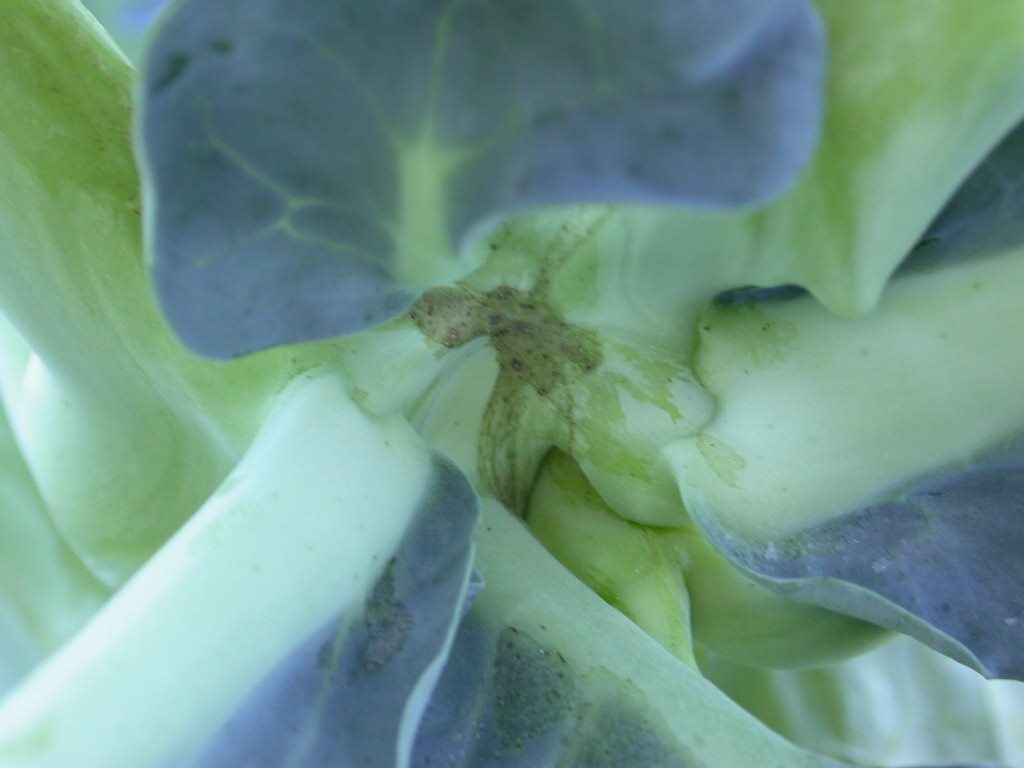Please click here to access the main AHDB website and other sectors.
- Home
- Knowledge library
- How to detect and monitor swede midge
How to detect and monitor swede midge
Find out how to identify and detect swede midge in your brassica crops and begin to explore possible control options.
Identification and symptoms
The adult is a small, greenish-yellow to light brown fly (1.5–2 mm), which is difficult to distinguish from other closely related midge species. It has very hairy wings.
The egg is tiny (0.3 mm), transparent and then turns creamy white as it develops. The larva is a small maggot, initially, 0.3 mm in size and reaching a final size of 3–4 mm. Larvae are initially translucent, becoming increasingly yellow until lemon-yellow at maturity.
The swede midge pupates in the soil.
Damage symptoms include swollen flowers, scarring in the growing point and on leaf petioles and flower stalks, blindness and crinkled leaves. It often kills the main shoot; in which case the side shoots grow out, causing a many-necked plant.

Monitoring
Pheromone traps are available; however, knowledge of insect identification and a microscope is required to separate the male swede midges from other species of fly that accidentally enter the traps. There are no known thresholds.
Detecting swede midge and plant damage
It can be challenging to detect swede midge in the field.
- Adults are small – around 1.5–2 mm in length – greenish-yellow to light brown, with hairy wings They look like closely related midge species and only live for a few days
- Eggs 0.3mm, initially transparent; then they turn creamy white as they develop
- The larva is like a small maggot, 0.3–0.4 mm, often feeding out of sight on plants: they are initially translucent, becoming increasingly lemon-yellow as they mature. For plants showing damage, detecting larvae is often the best way to confirm an infestation. This is usually best done by an expert
- The pupa is approx. 1.3 mm in length and forms cocoons in the soil
Typical damage from larvae on plants
- Swollen, distorted or twisted young shoots and leaf stalks
- Death of the growing tip which causes ‘blind’ heads and growth of side shoots, producing multi-necked plants
- Brown scarring on the leaf stalks or stems
- Development of secondary bacterial rots
- Reduced seed production
Some of these symptoms may be confused with other causes, such as:
- Common physiological conditions, e.g. heat stress
- Nutritional deficiencies, e.g. molybdenum deficiency
- Mechanical plant damage
- Feeding damage by other pest insects
Detection methods
Tools such as sticky traps, blacklight traps, fine-mesh emergence tents, and sweep nets have limited success. This is due to their low efficiency and indiscriminate capturing techniques.
However, a blend of sex pheromones extracted from swede midge females has been found to attract swede midge males effectively in the field. The blend was able to attract adult male swede midges for around six weeks, when used in polyethylene dispensers under field conditions in Switzerland.
Pheromone traps can be used to monitor for swede midge in the field. As the traps only attract males, their ability to reduce damage caused by swede midge is limited.
Using pheromone traps for monitoring
- Place pheromone traps 30 cm above the ground
- Individual traps should be at least 50 m apart in the field
Microscopic or molecular identification is needed to distinguish between male swede midge adults and other species of fly that may accidentally enter the trap.
As pheromone traps attract only males, their ability to control swede midge damage is limited. However, females can be attracted by certain mixtures of plant volatiles released from brassicas. These mixtures could be used to develop lures to monitor and control adult females and supplement the use of pheromone traps for adult males.
How can swede midge be controlled?
- An integrated pest management (IPM) strategy is needed to control swede midge
- Crop rotation is particularly important for control
- Monitor populations with pheromone traps
- Time your insecticide applications based on the numbers of adult males caught in traps, rather than using a calendar-based approach
Pheromones for mating disruption and repellents that stop midges finding hosts and laying eggs may have the potential for IPM programmes in the future.
Read more about swede midge control methods

